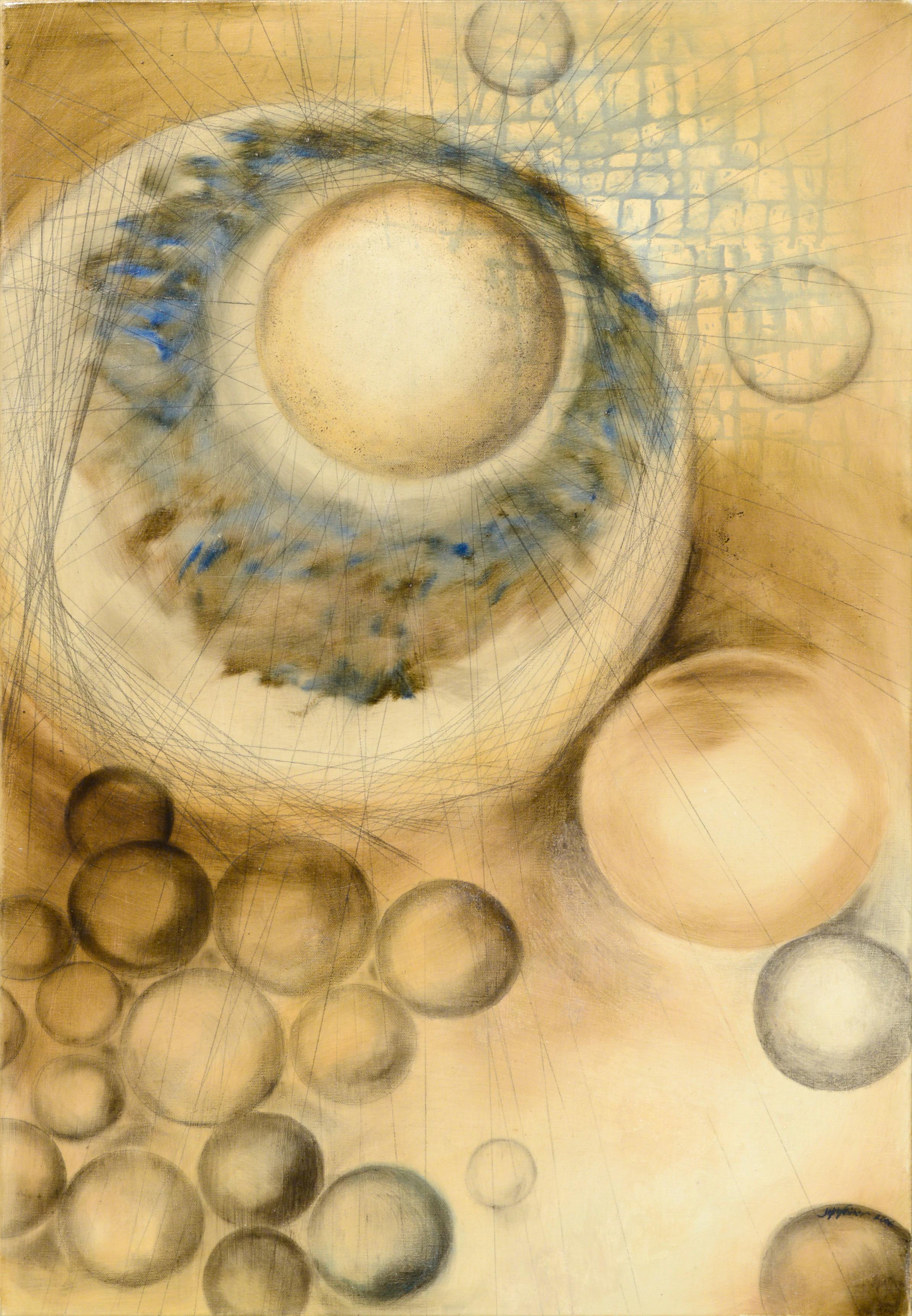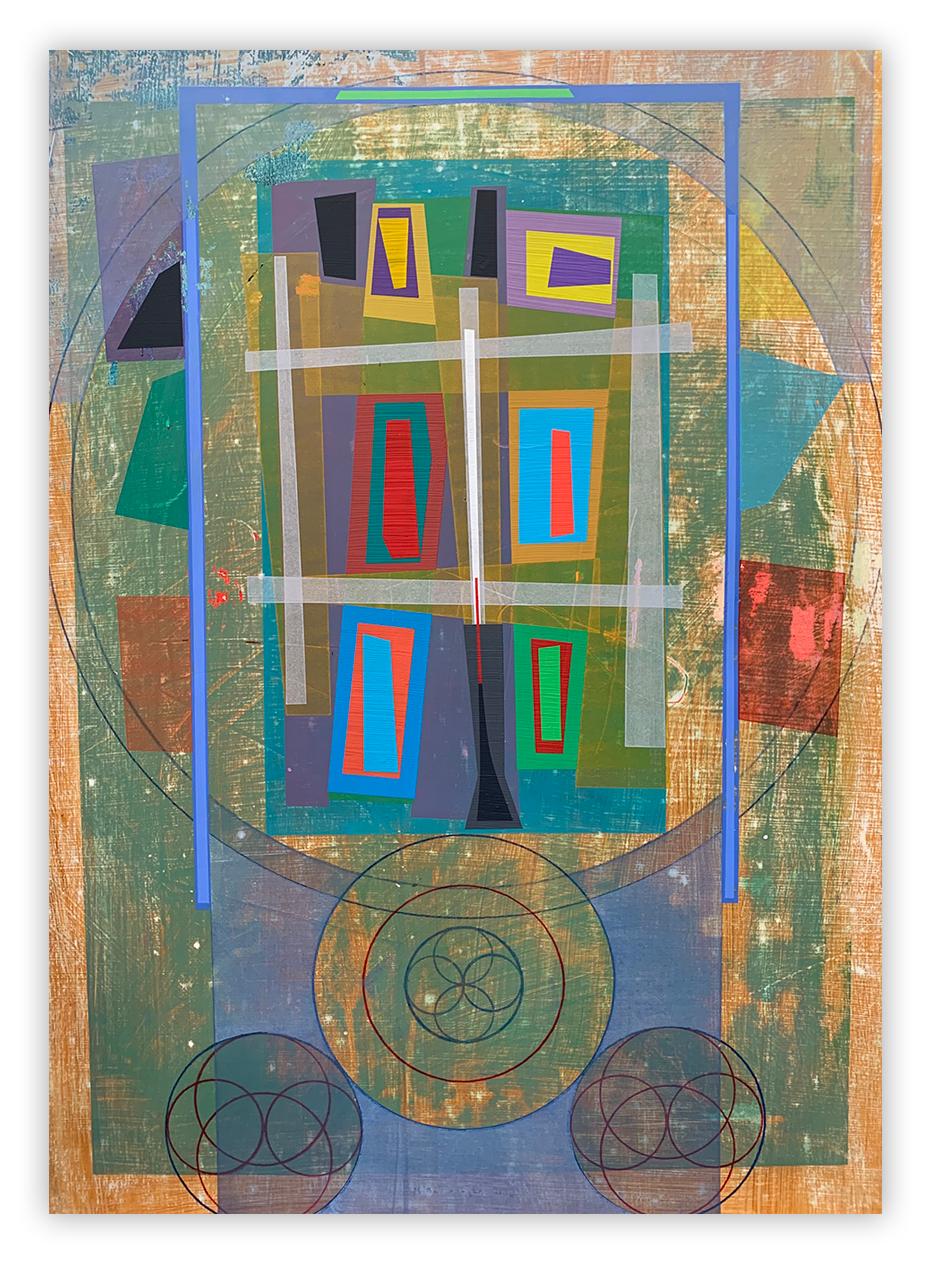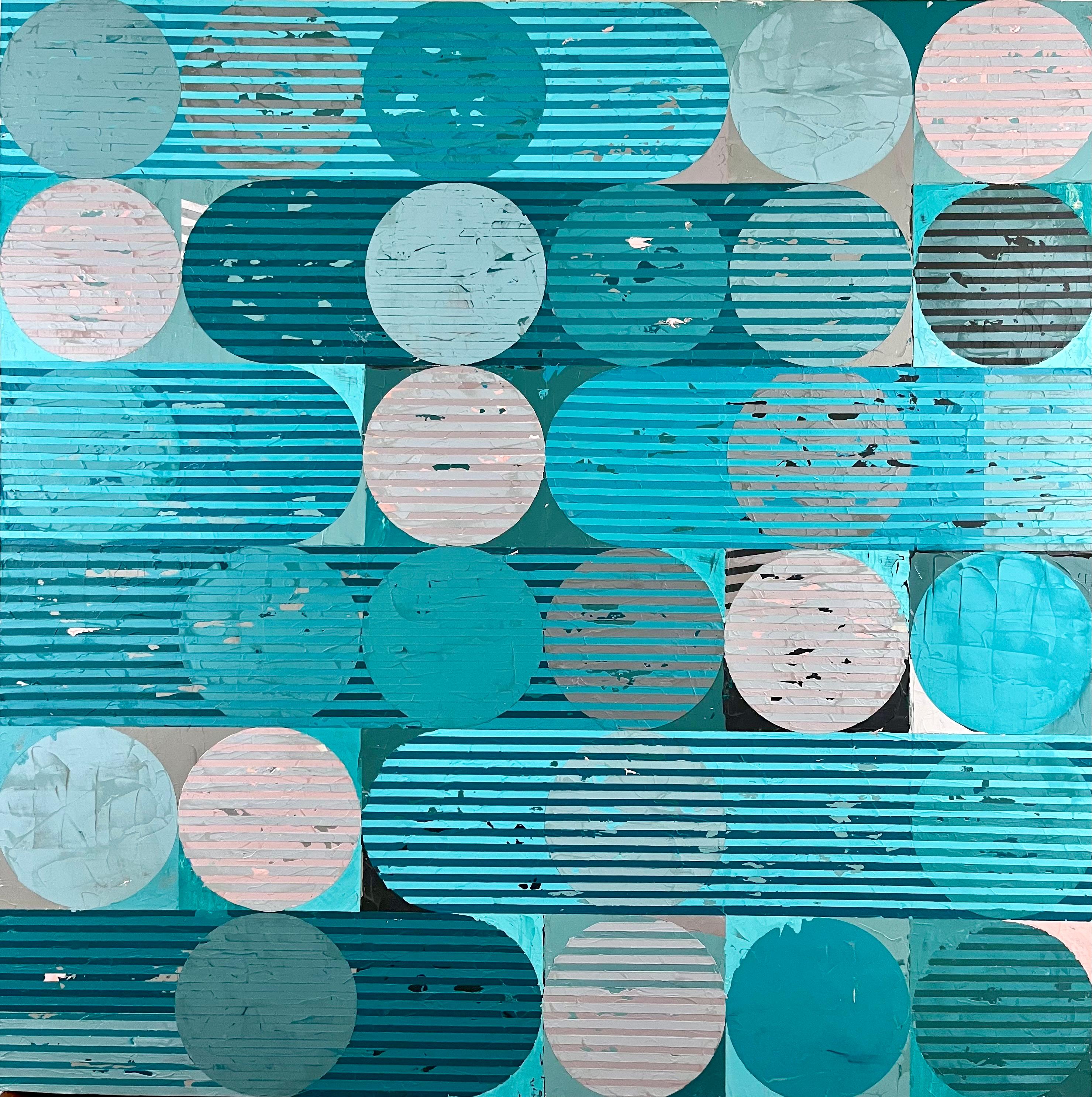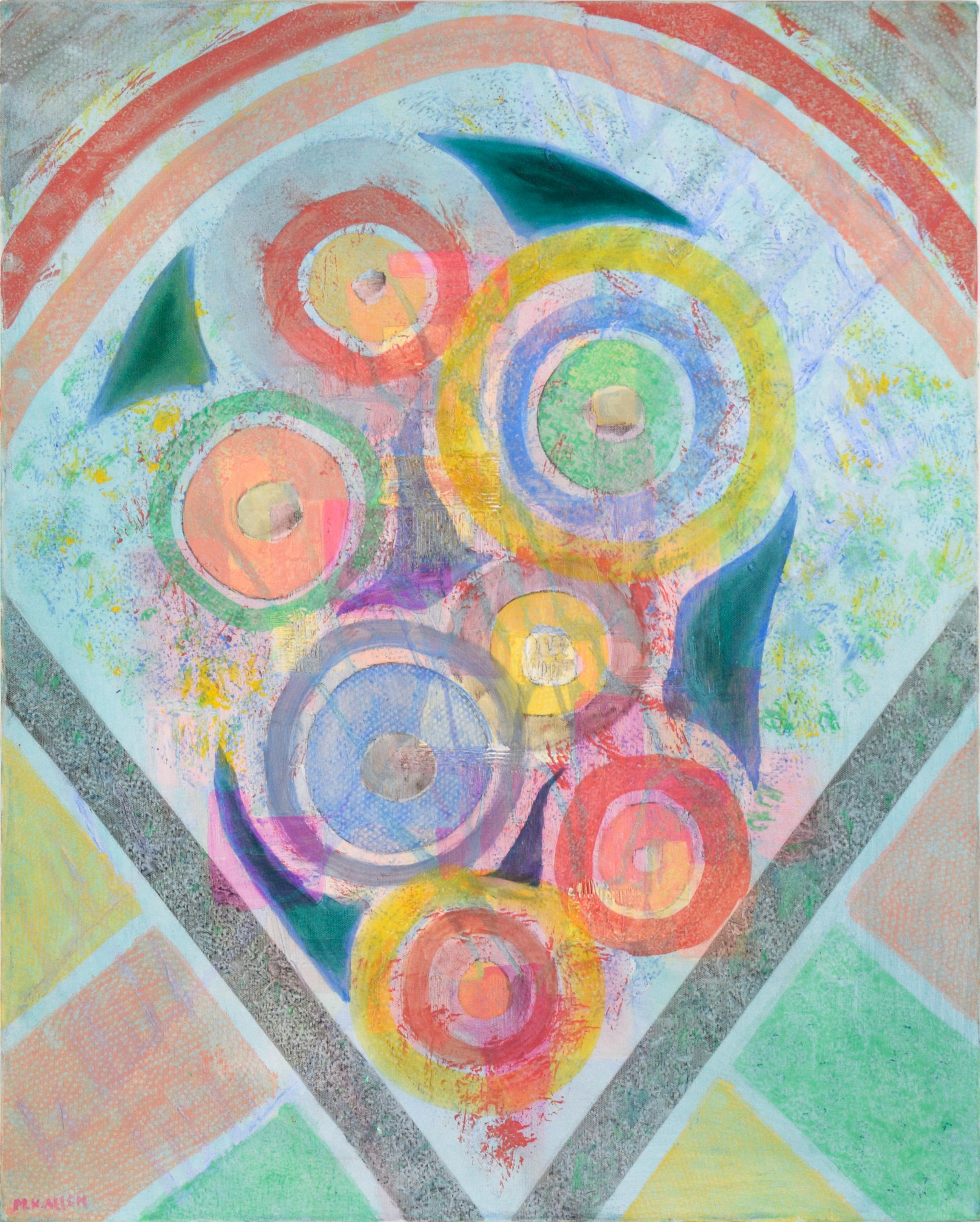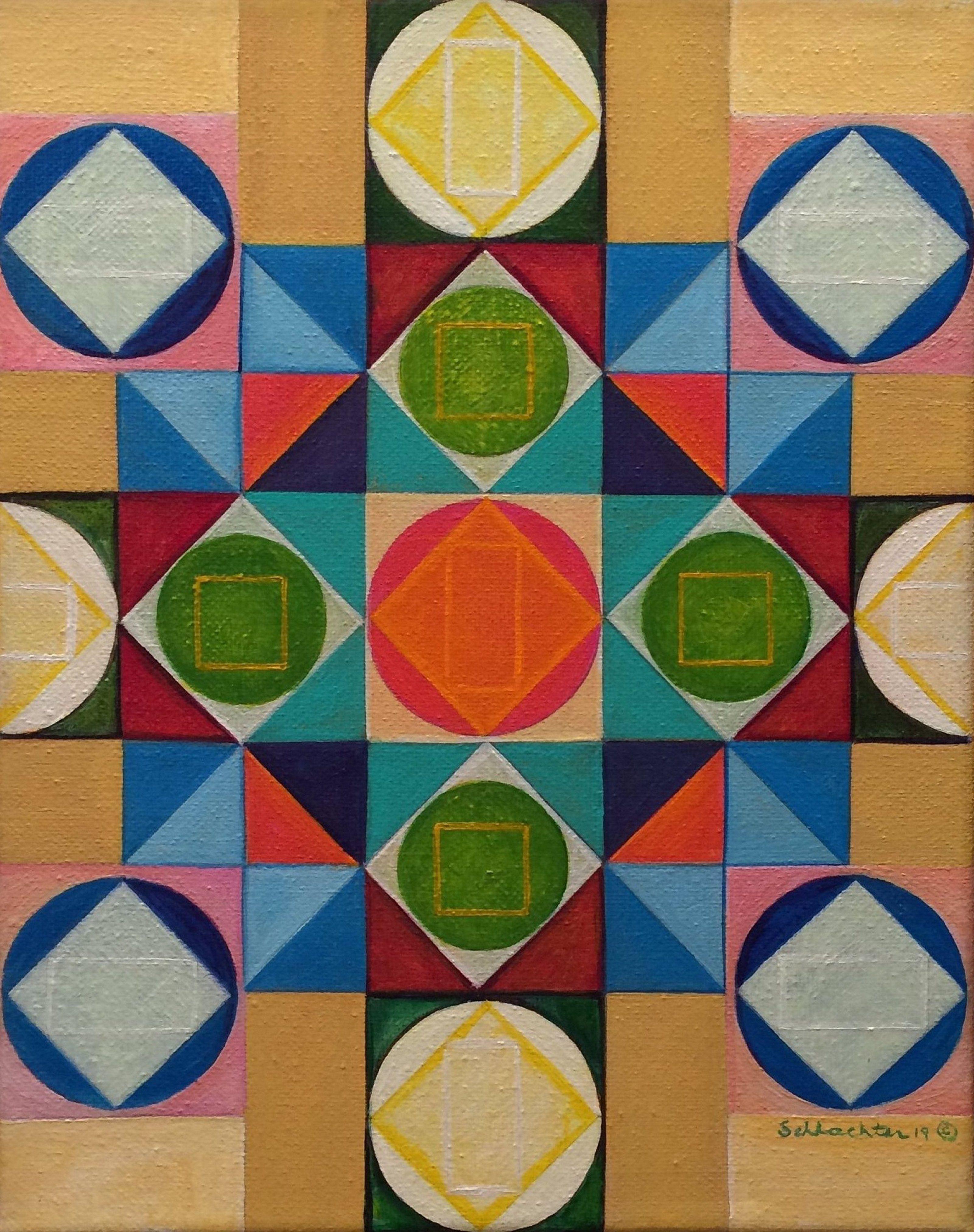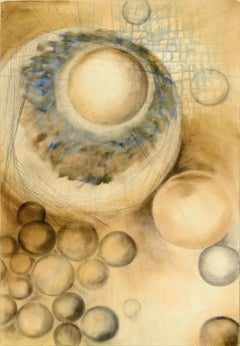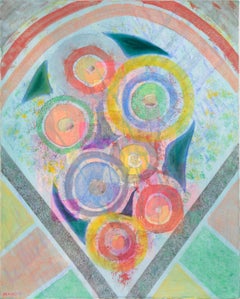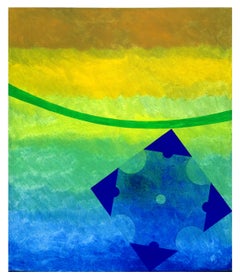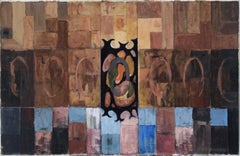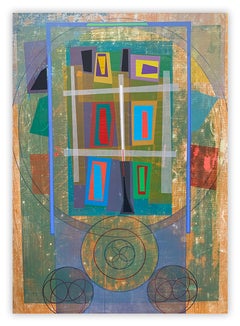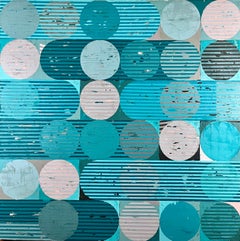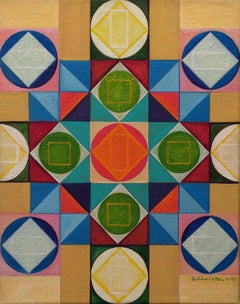Items Similar to Spiritual Origins - Geometric Abstract
Want more images or videos?
Request additional images or videos from the seller
1 of 9
Julie FudgeSpiritual Origins - Geometric Abstract1985
1985
$1,850
£1,403.11
€1,611.52
CA$2,650.38
A$2,917.87
CHF 1,491.33
MX$34,825.61
NOK 18,987.84
SEK 17,768.38
DKK 12,037.15
About the Item
Abstract oil on wood panel depicting the beginnings of the ascendancy of the Earth by Julie R. Fudge (American, 20th Century). Signed "Julie Fudge" on verso. Unframed. Image, 42"H x 32"W X 1.75"D.
Julie R. Fudge is a Aptos and Los Gatos, California abstract expressionist. And is also a retired teacher and has an interest in art as an expression of spiritual experience. Born in Los Angeles her mother was a school teacher.
- Creator:Julie Fudge (1940, American)
- Creation Year:1985
- Dimensions:Height: 42 in (106.68 cm)Width: 32 in (81.28 cm)Depth: 1.75 in (4.45 cm)
- Medium:
- Movement & Style:
- Period:
- Condition:
- Gallery Location:Soquel, CA
- Reference Number:Seller: JT-RS35711stDibs: LU5421824353
About the Seller
5.0
Platinum Seller
Premium sellers with a 4.7+ rating and 24-hour response times
Established in 1986
1stDibs seller since 2014
3,020 sales on 1stDibs
Typical response time: <1 hour
- ShippingRetrieving quote...Shipping from: Soquel, CA
- Return Policy
Authenticity Guarantee
In the unlikely event there’s an issue with an item’s authenticity, contact us within 1 year for a full refund. DetailsMoney-Back Guarantee
If your item is not as described, is damaged in transit, or does not arrive, contact us within 7 days for a full refund. Details24-Hour Cancellation
You have a 24-hour grace period in which to reconsider your purchase, with no questions asked.Vetted Professional Sellers
Our world-class sellers must adhere to strict standards for service and quality, maintaining the integrity of our listings.Price-Match Guarantee
If you find that a seller listed the same item for a lower price elsewhere, we’ll match it.Trusted Global Delivery
Our best-in-class carrier network provides specialized shipping options worldwide, including custom delivery.More From This Seller
View All"micro/macro" - Abstract Geometric Composition
By Jay Weiner
Located in Soquel, CA
Abstract geometric composition by California artist Jay Weiner (American, 20th Century). Signed and dated "Jay Weiner 2006" in the lower right corner. No frame.
Category
Early 2000s Abstract Geometric Abstract Paintings
Materials
Canvas, Oil, Graphite
$940 Sale Price
20% Off
Geometric Abstract with Circles in Acrylic on Canvas
Located in Soquel, CA
Geometric Abstract with Circles in Acrylic on Canvas
Bright and colorful abstract composition by Melvin K. Allen (American, 1922-2012). Several circles are shown overlapping each ot...
Category
1990s Abstract Geometric Abstract Paintings
Materials
Canvas, Acrylic
$700 Sale Price
20% Off
Balance and Universe Abstract
By Dorothy Hyman
Located in Soquel, CA
Beautiful vivid and fluid large scale abstract painting by Dorothy Hyman (American, 1904-2007). A dark blue object appears to float in a sea of colors, tra...
Category
1970s Abstract Expressionist Abstract Paintings
Materials
Canvas, Oil
$2,240 Sale Price
20% Off
Abstract Geometric Composition with Biomorphic Object - Acrylic on Canvas
Located in Soquel, CA
Bold abstract composition by RH Barnard (American, 20th Century). The backdrop of this piece is composed of rectangular sections of brown, red, blue, and tan. In the center of the composition, there is a black object...
Category
Late 20th Century Abstract Geometric Abstract Paintings
Materials
Canvas, Masonite, Acrylic
Vertical Abstract Geometric Composition
Located in Soquel, CA
Bold abstract composition by an unknown artist, "Moriarty". Signed on verso. Presented flush mounted to a wood frame.
Category
Late 20th Century Abstract Geometric Abstract Paintings
Materials
Oil, Wood Panel
$396 Sale Price
20% Off
Abstract Geometric Composition
By Nick O'Connor
Located in Soquel, CA
Bold geometric abstract painting by Nick O'Connor (American, late-20th Century). Signed, numbered, and dated "#1 Nick O'Connor 2002" on verso, with an inscription that reads "Hinduis...
Category
Early 2000s Abstract Geometric Abstract Paintings
Materials
Canvas, Oil, Spray Paint
You May Also Like
Organic Geometry (Mandala V) (Abstract painting)
By Michael Barringer
Located in London, GB
Organic Geometry (Mandala V) (Abstract painting)
Colour pencil, acrylic paint, modelling paste, and oil paint on paper— Unframed.
Although the initial inspiration for a painting mig...
Category
2010s Abstract Abstract Paintings
Materials
Paper, Mixed Media, Paste, Oil, Acrylic, Color Pencil
That Also Hits the Spot - Abstract Geometric Acrylic Painting
Located in Boston, MA
That Also Hits the Spot
30.0 x 30.0 x 1.5, 3.0 lbs
Acrylic Painting
Hand signed by artist
Artist's Commentary:
"Despite the chaos beneath, playful colors and measured circles can...
Category
21st Century and Contemporary Abstract Geometric Abstract Paintings
Materials
Acrylic
Beginnings - Abstract Geometric Acrylic Painting
By Glenn Fischer
Located in Boston, MA
Beginnings
36.0 x 36.0 x 2.0, 3.0 lbs
Acrylic
Hand signed by artist
Artist's Commentary:
"Glenn Fischer is an abstract artist working in collage and painting to create geometric-...
Category
21st Century and Contemporary Abstract Geometric Abstract Paintings
Materials
Acrylic
Shapes, Painting, Acrylic on Canvas
Located in Yardley, PA
This painting simple represents shapes and space. :: Painting :: Abstract :: This piece comes with an official certificate of authenticity signed by the artist :: Ready to Hang: Yes ...
Category
2010s Abstract Abstract Paintings
Materials
Acrylic
Finding Serenity, Painting, Acrylic on Canvas
Located in Yardley, PA
Each circle in this painting is symbolic of being whole and complete, and not being drawn into the turbulence happening all around you. It's about seeing life clearly, as it truly is...
Category
2010s Abstract Abstract Paintings
Materials
Acrylic
Elizabeth McKay Abstract Original Acrylic Painting Modern Geometric Art
Located in Palm Coast, FL
This is a striking original abstract acrylic painting on canvas by listed artist Elizabeth McKay, known for her modernist and geometric approach to contemporary art. This vibrant com...
Category
21st Century and Contemporary Abstract Abstract Paintings
Materials
Acrylic
